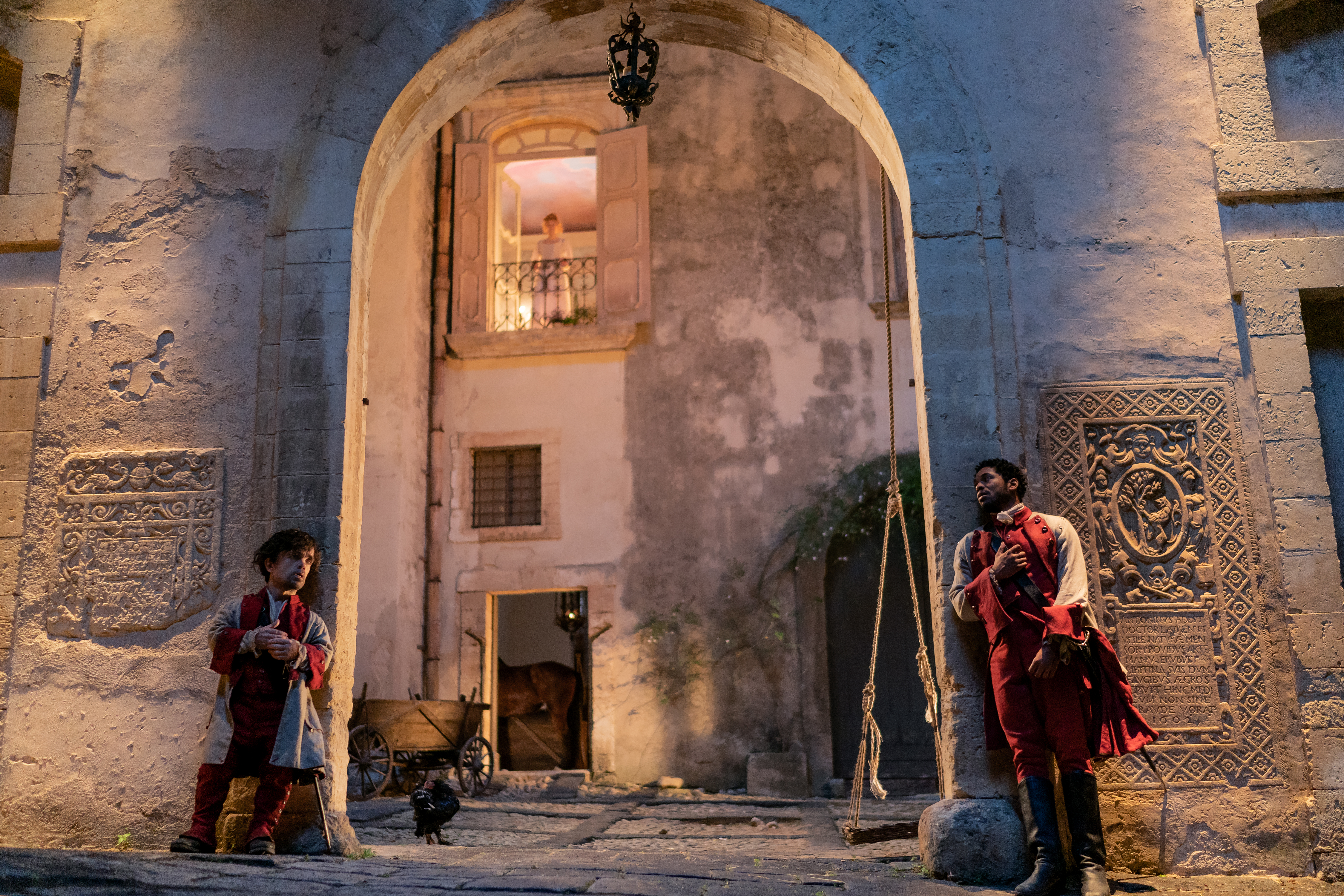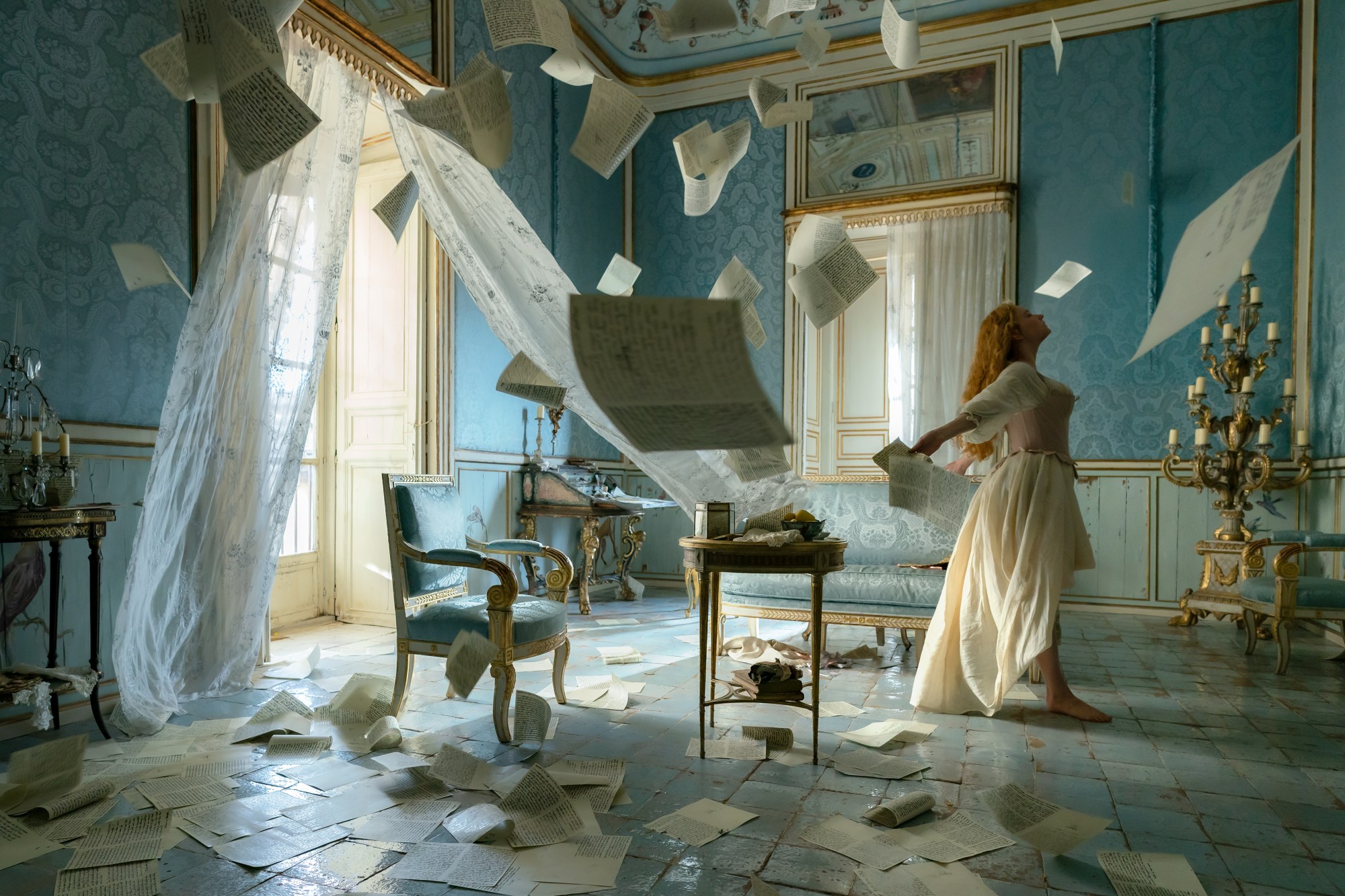
- Fashion
Oscar Nominated Costume Designer, Massimo Cantini Parrini (Cyrano), Captures Love in Fabric

What does love look like? Oscar Nominated Massimo Cantini Parrini (Cyrano) has captured the intangible and magical feeling in fabric and hue, so if the viewer feels like they are inside moving art, the twice nominated Italian costume designer – previously nominated for Pinocchio – has achieved his aim, for he drew inspiration from 18th century watercolors he’d observed in the museums of London and Rome. At Italy at The Oscars, the Tuscan native declared, “I love to work. It’s a passion, like being in love. You don’t know what to do with it.” “I was lucky enough to find what I want to do.” That passion was fed by watching his grandmother work material into tri-dimensional form, from fabric, to shape, to person, as a child.”
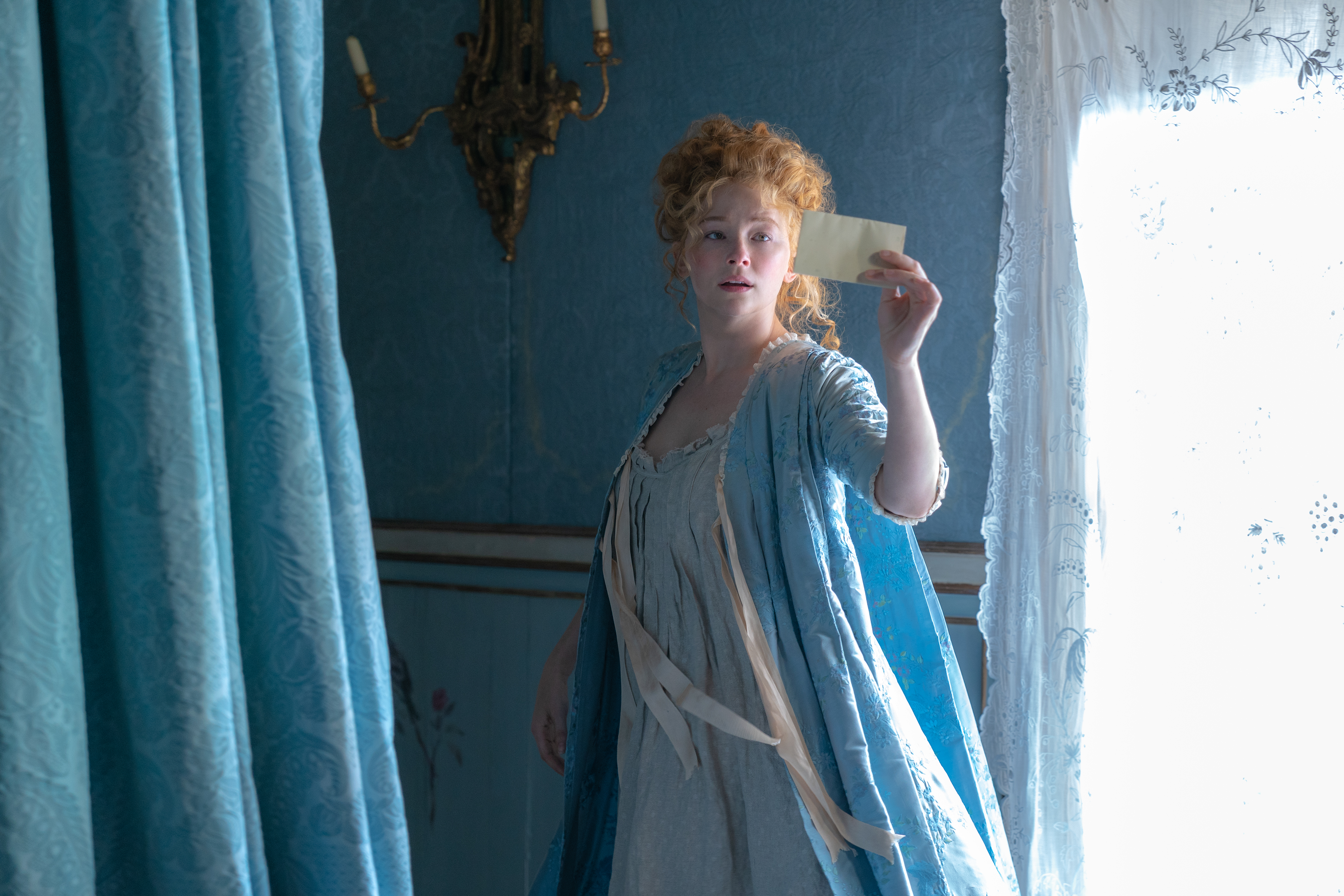
The Italian had one month to create almost 800 costumes with a team of 26 and was still creating as shooting began. The effect is anything but rushed, the rich beauty garnering an Oscar Best Costume Design nomination for both Massimo Cantini Parrini and Jacqueline Durran.
Directed by Joe Write, starring Peter Dinklage, Cyrano, is inspired by Edmund Rostand’s classic play, Cyrano de Bergerac, first performed in 1897. It tells the tale of a French army officer with a way with words who is secretly in love with the intelligent and beautiful Roxanne (Haley Bennett), but he fears she’ll reject him. When a handsome but inarticulate cadet, Christian (Kelvin Harrison Jr.), also falls for her, Cyrano starts writing her passionate letters signed on Christian’s behalf.
Mr. Parrini gave an exclusive to Goldenglobes.com

You were nominated for Pinocchio last year too – this is becoming a regular thing. What is the secret to your approach that people respond to?
What a question! I have no secret to be honest, I believe that when passion is great, inevitably all the love and commitment that I put into my work also reaches the public and I must say that it is the greatest satisfaction when I see enthusiasm for what I have done by people.
The color palette is exquisite. It quite literally captures the feeling of love, visually. Soft, delicate, tactile with the peaches, light blues, and lush butter creams, but then the explosions of visceral red and scarlet. It captures in cloth the light of Italy. Talk about your vision.
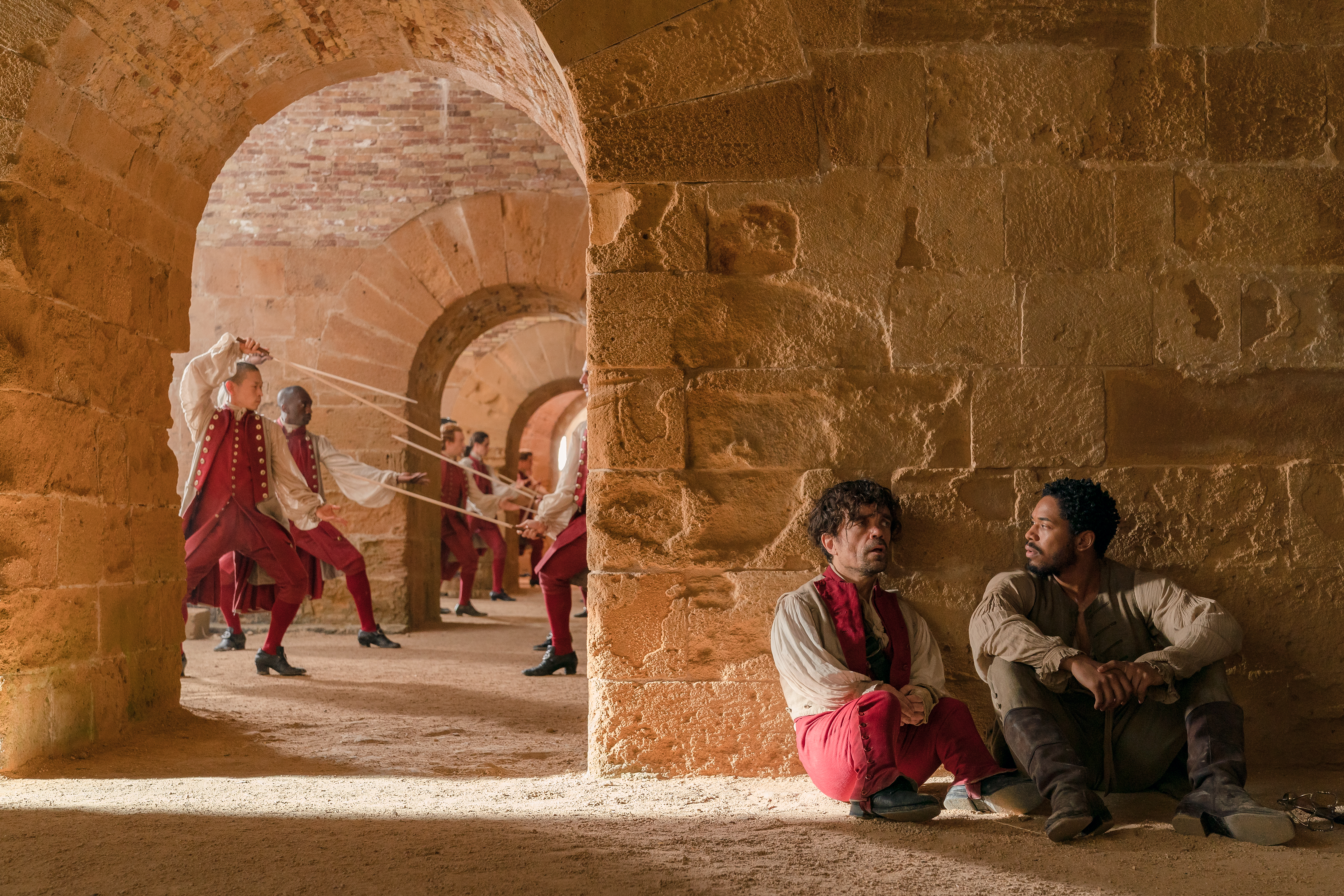
Each film has its own vision, and therefore each script is different, as a consequence of which, my work is different in every approach. Colors are fundamental to me, colors create excitement, they are part of the emotionality of the human being. In Cyrano the palette is deliberately light and impalpable, dusty, I wanted the transparency and lightness of the fabrics in the costumes to go hand in hand with the souls of the characters.
You made the stiff uniform gentle – how did you do that?
Fabrics only. I replaced the wool of the uniforms with linen, a soft and fluid fabric. Lightness and transparency were the watchwords for this film in every respect.
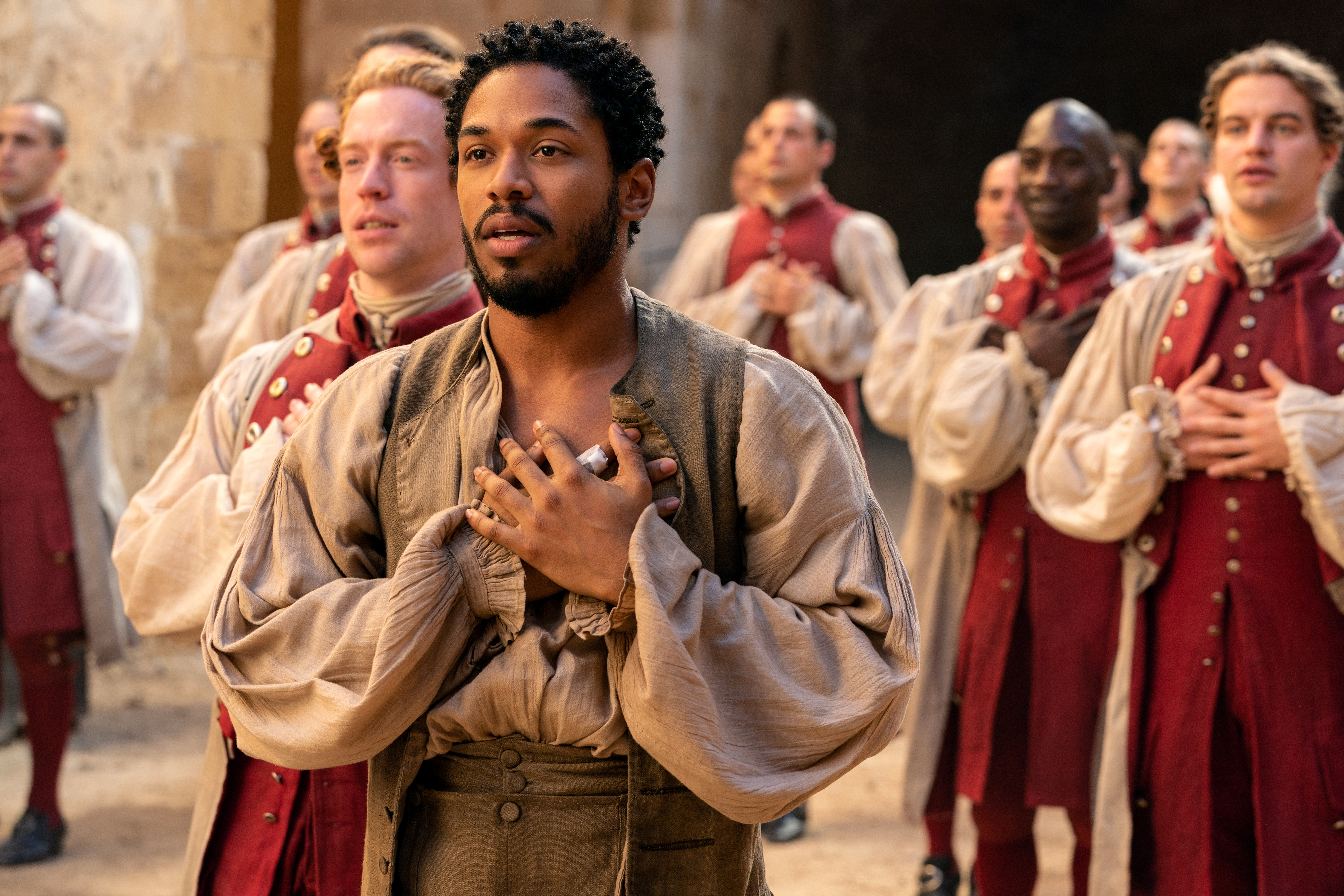
There is dancing and singing and sword fighting. What challenge does that create for a costume designer?
A very difficult challenge. It is a one hundred percent complete film; I always compare it to a sphere that is always perfect from wherever you look at it. I made more than 700 new costumes for the film with 5 social strata: nobility, bourgeoisie, people, clergy and military. I adapted the costumes for the dance scenes without having to depersonalize them and I did a great deal of aging on the costumes for the war scene. There were many challenges, the biggest one against time. I only had 26 days of preparation, we never finished cutting and sewing clothes until the last day of shooting.
How thrilling is it when you create something that you know will move the audience when they see it? Are you aware of the effect on the viewer when you create, or does it only resonate after it becomes physical?
When I read a script, I never read it as a costume designer but always as a spectator, I have to understand what I would like to see on the screen. If it excites me, we are halfway through the work, hoping to convey something to the public as well. Only when the work is finished that it resonates – but I would never finish working on a costume, I try to pursue perfection in every respect.
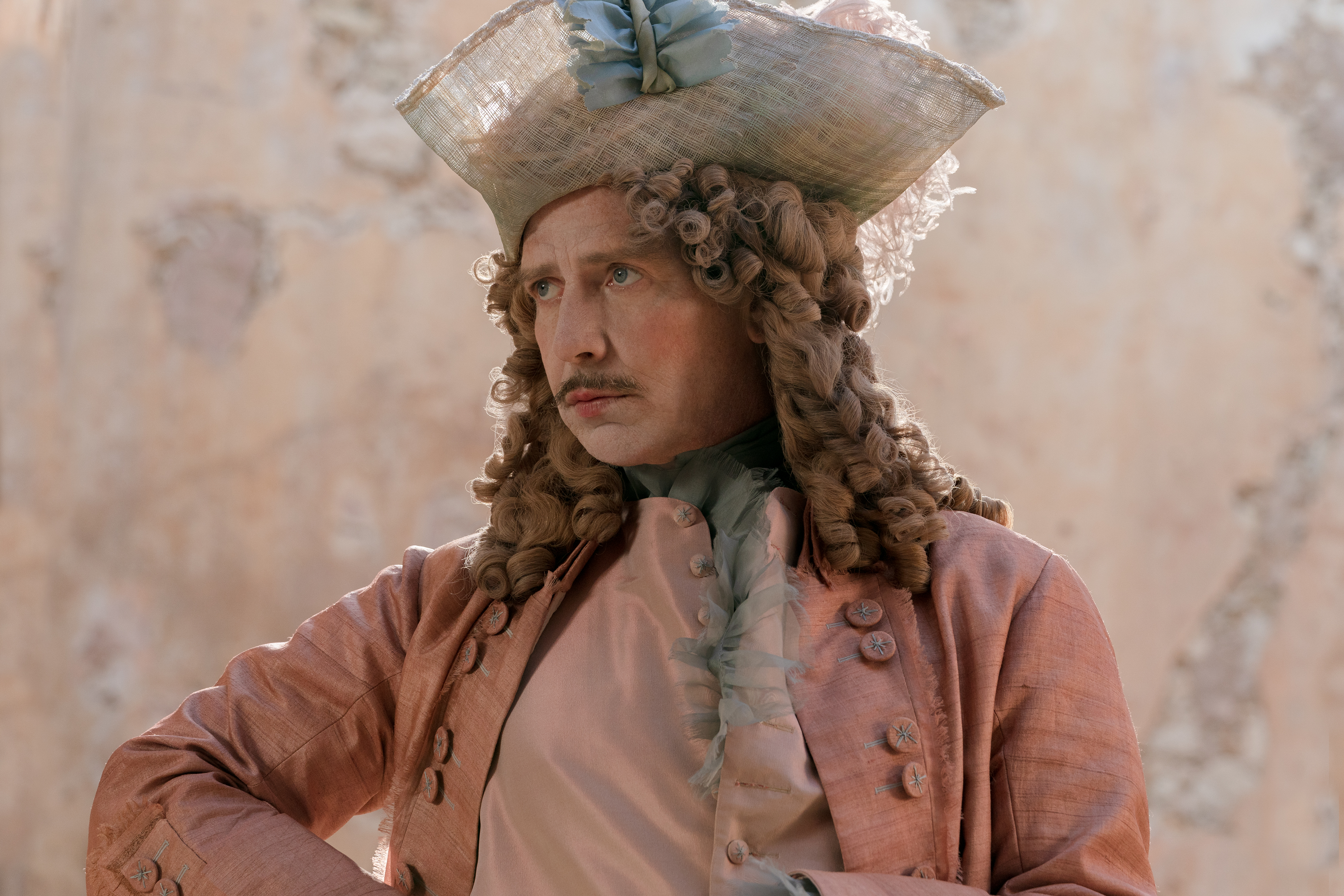
In some ways De Guiche (Ben Mendelsohn) embodies some of today’s puffiness in physical decoration. There is a frivolity and luxe extreme of someone too self-focused, indulgent, but also so insecure that he has to cover himself with so much grandeur because he doesn’t trust himself. It’s brilliant. Do you see the crossover to today and it is not only art but fun – explain please?
It has always been relevant! Especially in the eighteenth century where kings and queens had an image that clashed with their power. I deliberately wanted to dress de Guiche in pink to get out of the canons in which the villain is always dressed in dark/black. I think this choice underlines even more the diabolical character of him. And Ben … what an amazing actor!!!!!!
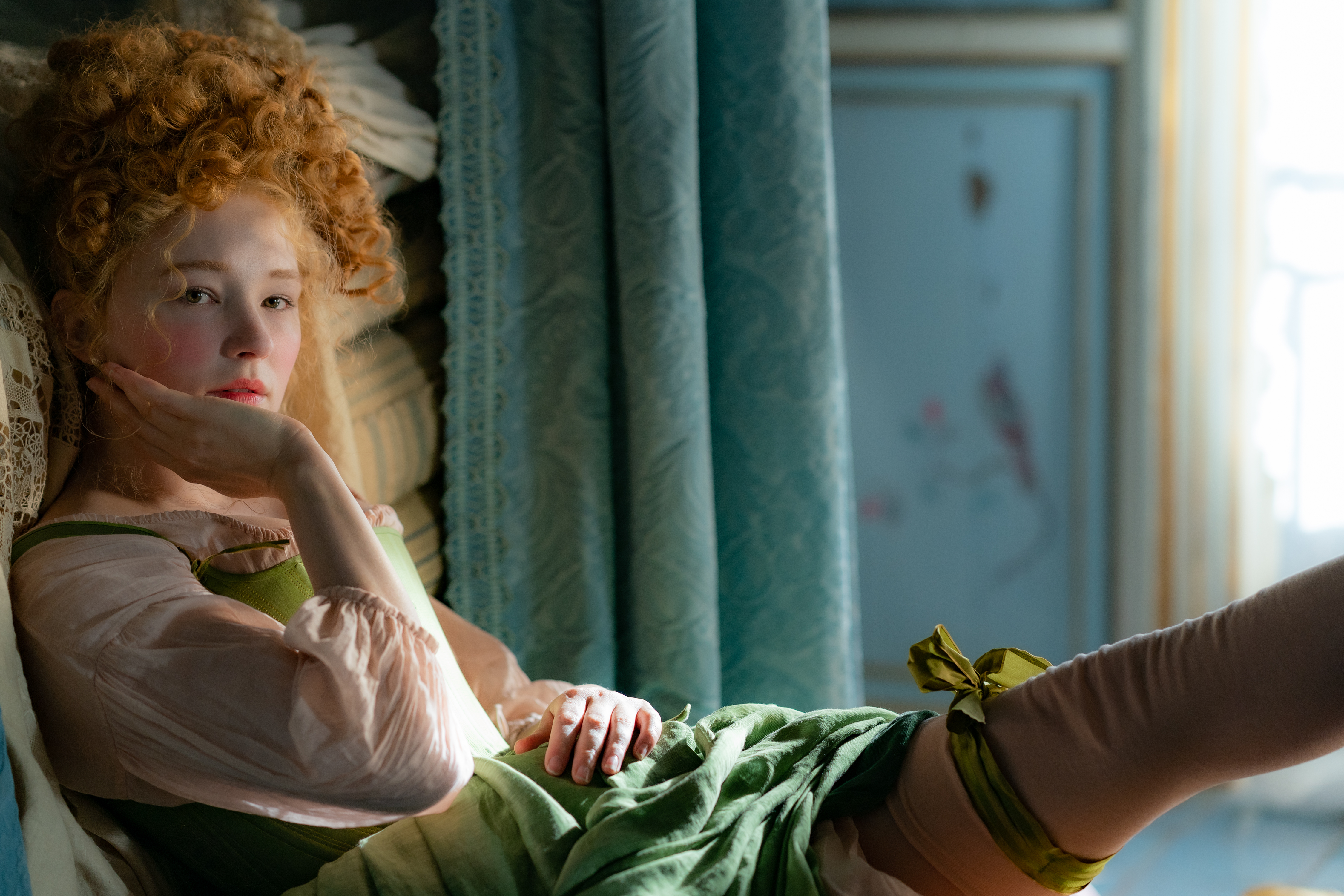
How do you combine heritage, the historical accuracy, with a somehow really modern approachable feel, so it’s accessible but still true to its roots?
I document a lot, but the secret is to know the history of the costume that I have studied all my life, only with the knowledge of one’s work does one have the opportunity to overturn it without losing its identity. Attention to detail has always been my biggest obsession, even every single appearance does not go on stage without me having checked everything.

Was that your biggest challenge?
Each film is very difficult for me, because it is difficult to always have a different idea, when the idea arrives, I can make thousands of costumes. I am the first judge of myself, and I am never satisfied, when at the cinema I see the finished film, I would start all over again. I am never happy.
What was the first outfit you wore that hinted clothing was important to you, as a child or that penetrated your memory as an inspiration?
I have never forgotten the first dress in my private collection of antique dresses, which has now become huge, about 4,500 pieces, a 1950s wedding dress.
In an era of sustainability. What happens to these incredible costumes afterwards?
They are archived for exhibitions and events in the various tailors that have made them, and some are in my home, if I can, I love to jealously preserve what I do.
One final question. I’m unclear how the work was shared with Jacqueline Durran?
I dressed a lot of women in the film. Jacqueline took care of Roxanne’s wardrobe at the behest of the director; they are very good friends and have always worked together. Not knowing me, Joe maybe needed some security. It was nice to have met Jacqueline in London but, unfortunately for work reasons she was never able to come to the set.
